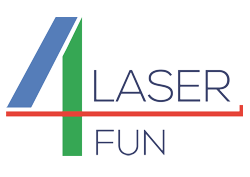Results of the work in the Laser4Fun project has been published as:
F. Fraggelakis, G. Mincuzzi, J. Lopez, I. Manek-Hönninger and R. Kling. Controlling 2D laser nano structuring over large area with double femtosecond pulses. Applied Surface Science, November 2018
Abstract
Laser surface texturing is an established way to introduce surface functionalities on solid surfaces. By means of femtosecond laser sources, it’s possible to texture a variety of solids such as metals, semiconductors and transparent materials, introducing features of different symmetry and size. Fabrication of laser induced periodic surface structure (LIPSS) which typically range in the near-submicron length scale can lead to strong modifications of surface wetting, tribological and optical properties. Controlling LIPSS morphology could enable us to mimic functional textures found in nature, introducing functionalities such as antireflectivity and bactericidity. Several works demonstrate the impact of polarization control and double-pulse irradiation on determining texture symmetry and size. Here we present a comprehensive study on controlling laser induced structures by double femtosecond pulse irradiation. The effect of pulse polarization and interpulse delay is elucidated and the generation of novel 2D surface morphologies is reported. A plausible interpretation of the structure formation mechanism is proposed in the frame of non-linear convection flow. A high average power industrial femtosecond laser source with a pulse duration of 350 fs operating at high repetition rate was employed for the experiments. Large areas were processed by combining different 2D morphologies generating a holographic pattern. We believe that our results provide a novel insight in controlling laser induced submicron morphology. Moreover, the presented surface texturing process is scalable in terms of processed area and cycle time and fully compatible with high repetition rates, demonstrating for the first time the feasibility to introduce double-pulse processing in an industrial environment.
